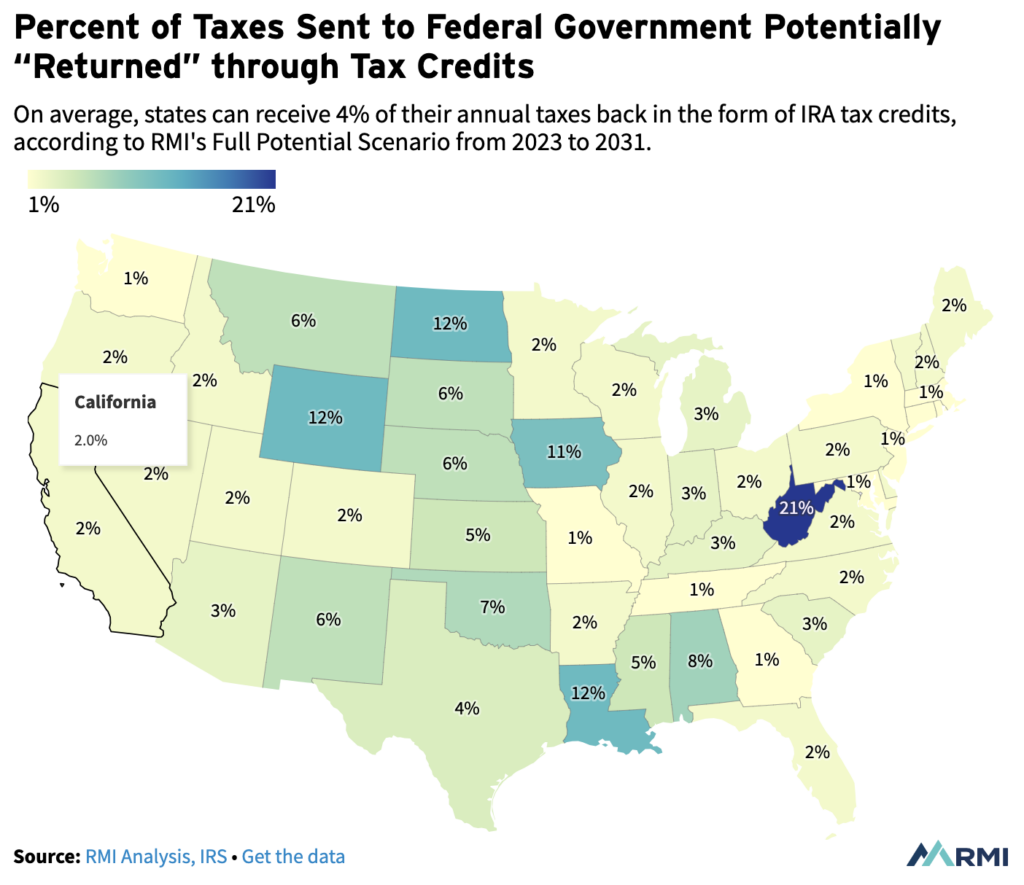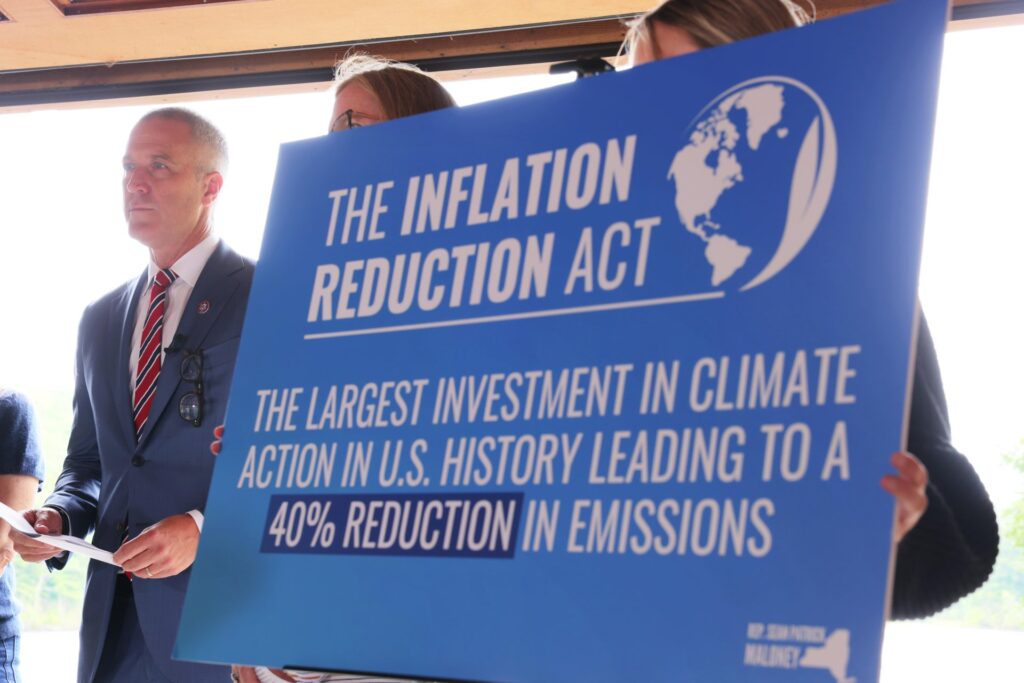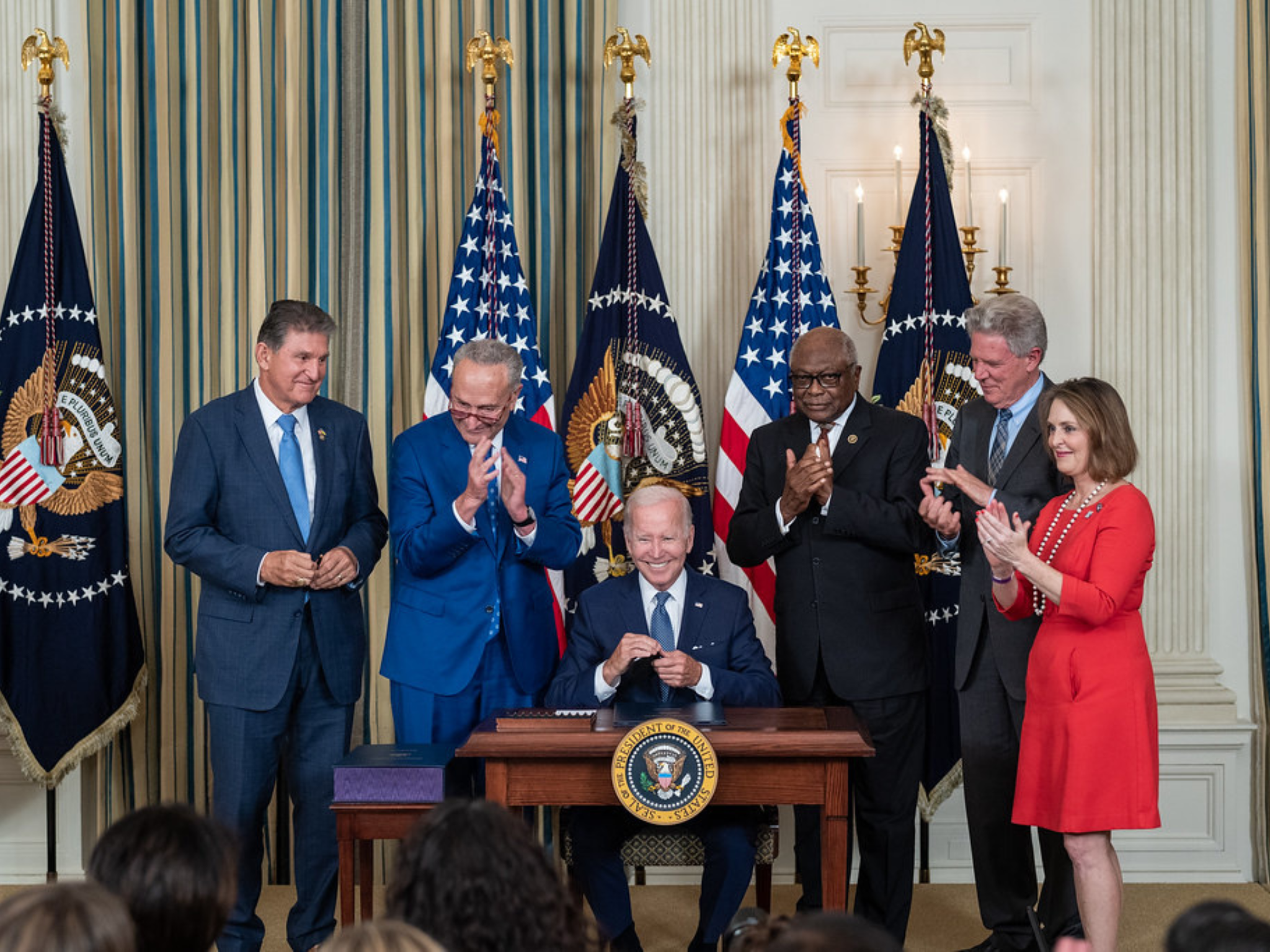Inflation Reduction Act: US States Aren’t Using Enough of the Available Funds for Climate Action
4 Mins Read
Two years after the IRA passed, a new report found that states have only captured a tiny fraction of the funding available.
By Syris Valentine
When President Joe Biden signed the Inflation Reduction Act, or IRA, into law two years ago, a starting gun sounded. “The race is on,” said Jacob Corvidae, a senior principal with the Rocky Mountain Institute (RMI), a clean energy think tank, for states to attract and encourage the private actions that will position their economies at the forefront of the clean economy, and capture the tax incentives in the IRA that spur those investments.
According to a new report from RMI, which Corvidae co-authored, that race is off to a slow start. Corvidae and his team estimate that, for the nation to meet its clean energy goals, the federal government would need to invest around $1 trillion into local economies by 2031 via tax incentives.
So far, through June 2024, the feds have distributed $66 billion — or around 6 percent of the full spending that our climate commitments demand.
How have states used tax incentives?

The RMI report looked specifically at how well each state has captured federal tax incentives, compared to estimates of their full funding potential. On average, states in the contiguous U.S. have received 7 percent of the total funding they would need to reach their full potential by 2031, but that number varies widely.
California and Texas are leading the nation in the volume of tax benefits received to date — California has claimed $13 billion and Texas $9 billion. Both states have emerged as leaders in the clean energy economy. But, according to the RMI estimates, both are also still far from their full potential, with Texas capturing only 6 percent of its full potential for funding, despite its clean energy growth. At 11 percent, California is at the higher end for the nation.
Some of the states that have received the least federal funding through IRA tax incentives include West Virginia, at less than 1 percent of its potential and just over $120 million, and Louisiana, also under 1 percent at just under $400 million. Idaho, Delaware, and Vermont have each yet to claim even $100 million in IRA incentives, at 2 percent, 2 percent, and 6 percent respectively.
Covidae attributes the slow start to a necessary and expected period of ramping up. The report notes, “Use of the tax credits is just getting started, so it makes sense that these numbers are (for almost all states) low right now.”
Although, it also clarifies that most states are not on track to achieve their full potential of federal funding. Businesses and families are still figuring out how to take advantage of what exists, so the states that have best been able to quickly seize the opportunities are those (California, for instance) that had a head start, with markets for solar and electric vehicles that had already begun to mature — or, like Georgia, where they’ve been able to attract major industrial investments.
Progressing policy through IRA dollars

However, while overall funding through tax incentives is lower than expected, individual households are trending above predictions, according to IRS data cited in the report. Four times as many families as expected are taking advantage of the residential tax credits.
For Corvidae and the report’s co-authors, the point of tracking this information is to help states understand where their potential lies, and how to encourage clean energy adoption and investments in those key areas.
For example, Corvidae said, states can create policies that increase demand for clean tech, develop one-stop-shop platforms that provide clear guidance on how to navigate the incentive landscape, and convene stakeholders in target sectors where the state can maximise the environmental and economic benefits of a given incentive.
He pointed to South Carolina, and its Special Committee on South Carolina’s Energy Future as an example. The state Senate committee recently began meetings with the goal of creating a comprehensive bill for the state’s energy policy. (South Carolina is currently at 7 percent of its funding potential, per the RMI analysis.)
Initiatives like that, Corvidae said, can help states think about the possibilities that will allow them to answer one key question: “How do we organise the state to make sure we’re capturing these dollars?”
This article by Syris Valentine was originally published on Grist. It is republished here as part of the global journalism collaboration Covering Climate Now.



